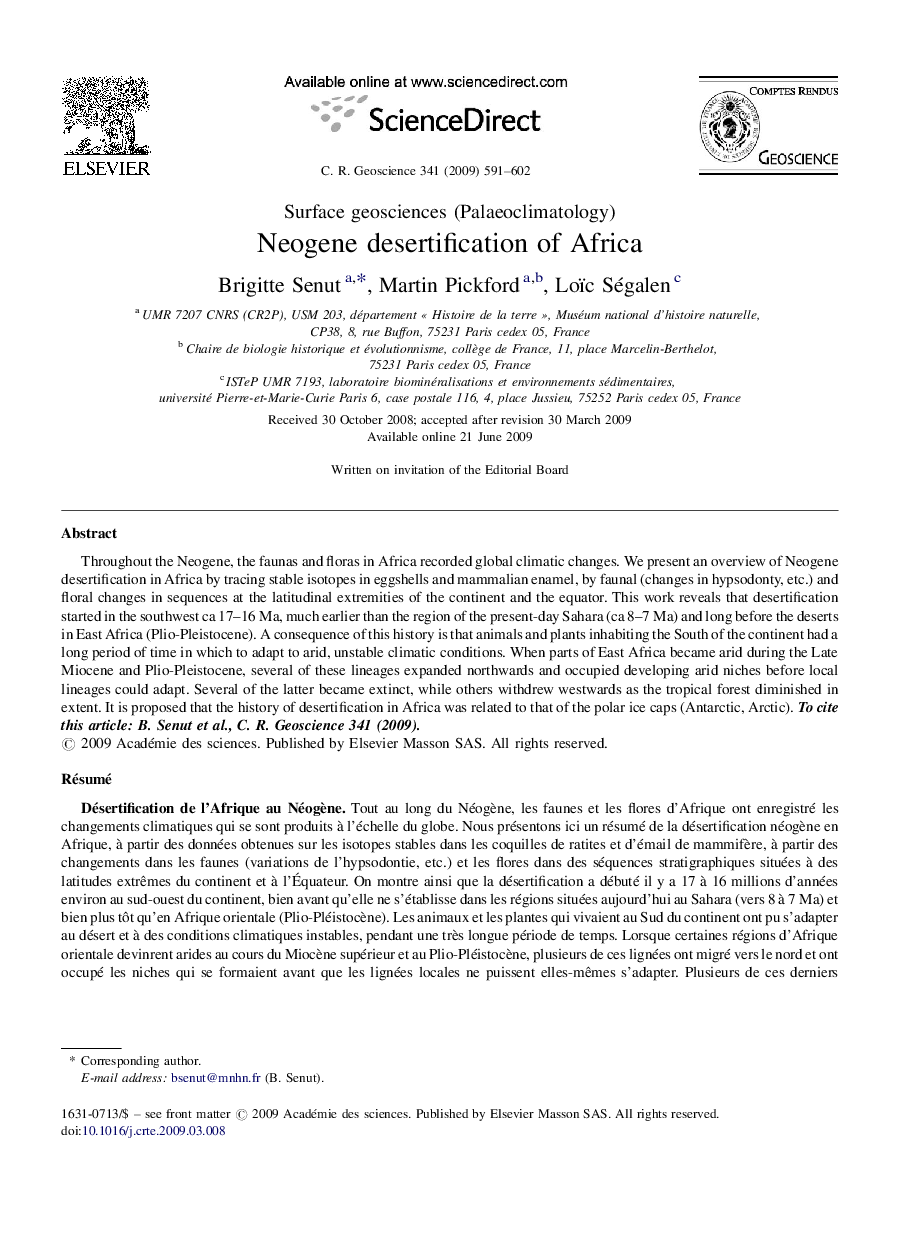| کد مقاله | کد نشریه | سال انتشار | مقاله انگلیسی | نسخه تمام متن |
|---|---|---|---|---|
| 4462620 | 1621572 | 2009 | 12 صفحه PDF | دانلود رایگان |

Throughout the Neogene, the faunas and floras in Africa recorded global climatic changes. We present an overview of Neogene desertification in Africa by tracing stable isotopes in eggshells and mammalian enamel, by faunal (changes in hypsodonty, etc.) and floral changes in sequences at the latitudinal extremities of the continent and the equator. This work reveals that desertification started in the southwest ca 17–16 Ma, much earlier than the region of the present-day Sahara (ca 8–7 Ma) and long before the deserts in East Africa (Plio-Pleistocene). A consequence of this history is that animals and plants inhabiting the South of the continent had a long period of time in which to adapt to arid, unstable climatic conditions. When parts of East Africa became arid during the Late Miocene and Plio-Pleistocene, several of these lineages expanded northwards and occupied developing arid niches before local lineages could adapt. Several of the latter became extinct, while others withdrew westwards as the tropical forest diminished in extent. It is proposed that the history of desertification in Africa was related to that of the polar ice caps (Antarctic, Arctic).
RésuméTout au long du Néogène, les faunes et les flores d’Afrique ont enregistré les changements climatiques qui se sont produits à l’échelle du globe. Nous présentons ici un résumé de la désertification néogène en Afrique, à partir des données obtenues sur les isotopes stables dans les coquilles de ratites et d’émail de mammifère, à partir des changements dans les faunes (variations de l’hypsodontie, etc.) et les flores dans des séquences stratigraphiques situées à des latitudes extrêmes du continent et à l’Équateur. On montre ainsi que la désertification a débuté il y a 17 à 16 millions d’années environ au sud-ouest du continent, bien avant qu’elle ne s’établisse dans les régions situées aujourd’hui au Sahara (vers 8 à 7 Ma) et bien plus tôt qu’en Afrique orientale (Plio-Pléistocène). Les animaux et les plantes qui vivaient au Sud du continent ont pu s’adapter au désert et à des conditions climatiques instables, pendant une très longue période de temps. Lorsque certaines régions d’Afrique orientale devinrent arides au cours du Miocène supérieur et au Plio-Pléistocène, plusieurs de ces lignées ont migré vers le nord et ont occupé les niches qui se formaient avant que les lignées locales ne puissent elles-mêmes s’adapter. Plusieurs de ces derniers s’éteignirent à cette époque, mais d’autres se restreignirent en Afrique occidentale, avec la réduction de la forêt tropicale.
Journal: Comptes Rendus Geoscience - Volume 341, Issues 8–9, August–September 2009, Pages 591–602